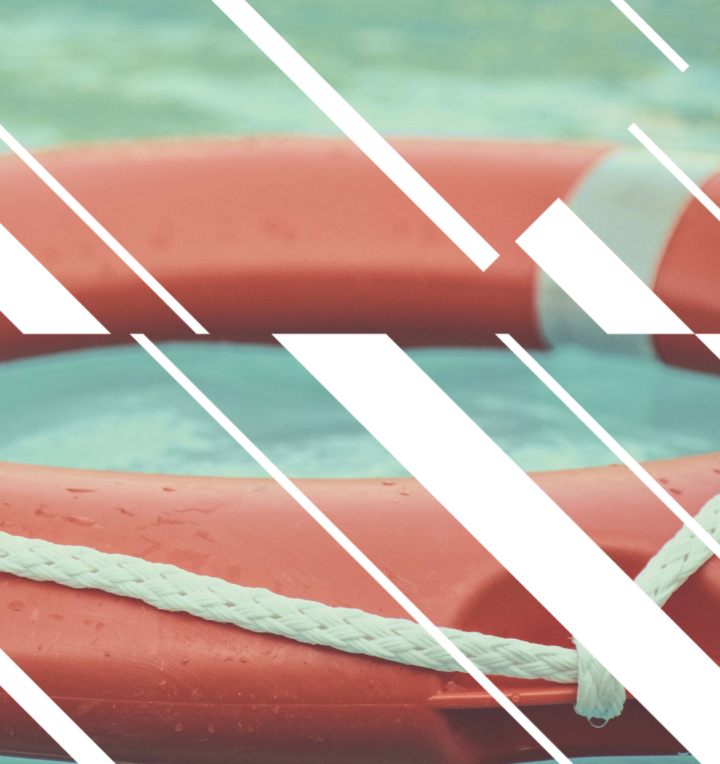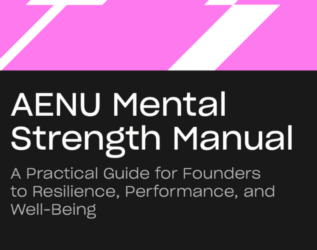When You Hit the Wall: A Founder’s Guide to Crisis Mode

You don’t have to break down to be in crisis. But you do need a plan.
Most founders don’t admit they’re in crisis until long after it’s already happened. In fact, many still don’t call it that — even as they spiral through exhaustion, irritability, and decision paralysis.
Crisis mode in entrepreneurship doesn’t always look dramatic. Often, it looks highly functional:
You’re still showing up. You’re still replying to emails. But internally, the system is glitching.And if left untreated, it compounds.
That’s why we built the Crisis Management section into the AENU Mental Strength Manual — not as a philosophy, but as a protocol. When mental clarity collapses, founders need structure they can follow even when their cognition is low and motivation is gone.
This article is that protocol, restructured for use — in real life, in real time.
Recognizing the Red Zone
Burnout isn’t binary. There’s no switch that flips. It’s a slow deterioration of clarity, energy, and identity.
Here are the most common early symptoms, pulled from the manual:
-
You feel exhausted despite getting enough sleep
-
You’re emotionally numb — not anxious, just detached
-
You find yourself staring at decisions and avoiding them
-
You experience irritability, brain fog, and guilt — in cycles
-
You’ve lost connection to what used to matter
Many founders say they “don’t feel like themselves anymore.” That’s the red flag.
If this is familiar, skip the self-doubt. Go straight to the protocol.
AENU’s 4-Step Crisis Protocol
When crisis hits, the goal isn’t to fix everything.
It’s to break the spiral — and build capacity for recovery.
Step 1: Disconnect (24–48 Hours)
“Take 24–48 hours off. Turn off notifications.”
Start here. Not next week. Not after one more investor call.
-
Activate an out-of-office.
-
Tell your team: “I’m going dark for 48 hours to reset. This is essential.”
-
Hand off responsibility temporarily (more on that below).
Silence isn’t indulgent. It’s required to reset the nervous system and exit panic logic.
Step 2: Delegate the Immediate Pressure
“Before doing any task, ask:
Can someone else do this 80% as well?
Does this move the business forward today?
Would my team be more empowered without me here?”
You don’t need to fix the org chart. You need to hand over the 20% that’s breaking you.
Founders in crisis often hold too tightly to tasks out of fear. That’s the fastest way to erode trust — in yourself, and from your team.
Delegation is not a loss of control. It’s a form of clarity.
Step 3: Get Support (Now, Not Later)
“Speak to a coach, therapist, or fellow founder.”
No one powers through crisis alone.
You don’t need a solution. You need containment. Talk to someone who can hold space without judging or trying to optimize you.
If you don’t have a person in mind, ask your investor or team — or use a platform like Sesame or [Koa Health].
We also maintain a vetted list of mental health professionals familiar with founder dynamics — reach out.
Step 4: Re-enter With Structure
After your 48-hour reset, don’t rush back in.
Use our 10-Minute Journaling Tool:
-
What went well today?
-
What’s causing me stress?
-
What’s one small thing I can control tomorrow?
Repeat this nightly for one week.
Also schedule what the manual calls “Solitude Blocks” — 60 minutes per week, phone off, no inputs, just quiet time for mental decompression. You’re not meditating. You’re recovering cognitive space.
Additional Tools (From our upcoming Manual)
Once you’re out of acute mode, here’s what we recommend embedding into your recovery system:
✅ Burnout Checklist (Manual, pp. 17–18)
A 20-item self-assessment across physical, emotional, behavioral, and work-related stress markers. Rate yourself 0–5 per item.
Total score indicates whether you’re in low, moderate, or emergency stress state.
✅ Decision Frameworks
-
If a task takes less than 5 minutes: do it now.
-
If it doesn’t move the company forward: eliminate it.
-
If it creates noise, not clarity: delay it.
✅ Founder Sleep Hygiene
-
No screens 60 min before bed
-
Room temp at 18–20°C
-
Fixed wake time daily — yes, even on weekends
✅ Movement & Nutrition Rules
-
Minimum 30 min daily movement
-
No sugar or caffeine after 2pm
-
Hydration with electrolytes = better focus
These aren’t lifehacks. They’re mental infrastructure.
What Happens If You Ignore It
Here’s what we see when founders skip crisis recovery:
-
Disconnected leadership
-
Team attrition
-
Regressive decisions made in panic
-
Strategic overreaction or total shutdown
-
Personal shame cycles that block future clarity
This is preventable.
You Are the Infrastructure
“Recovery is not indulgence. It’s maintenance.
Mental clarity is not a gift. It’s a system.
Resilience isn’t built in the good times — it’s built in moments like this.”
You’re not less of a founder because you’re struggling.
You’re more of one because you’re choosing to step back and address it.
And now you have the tools.








